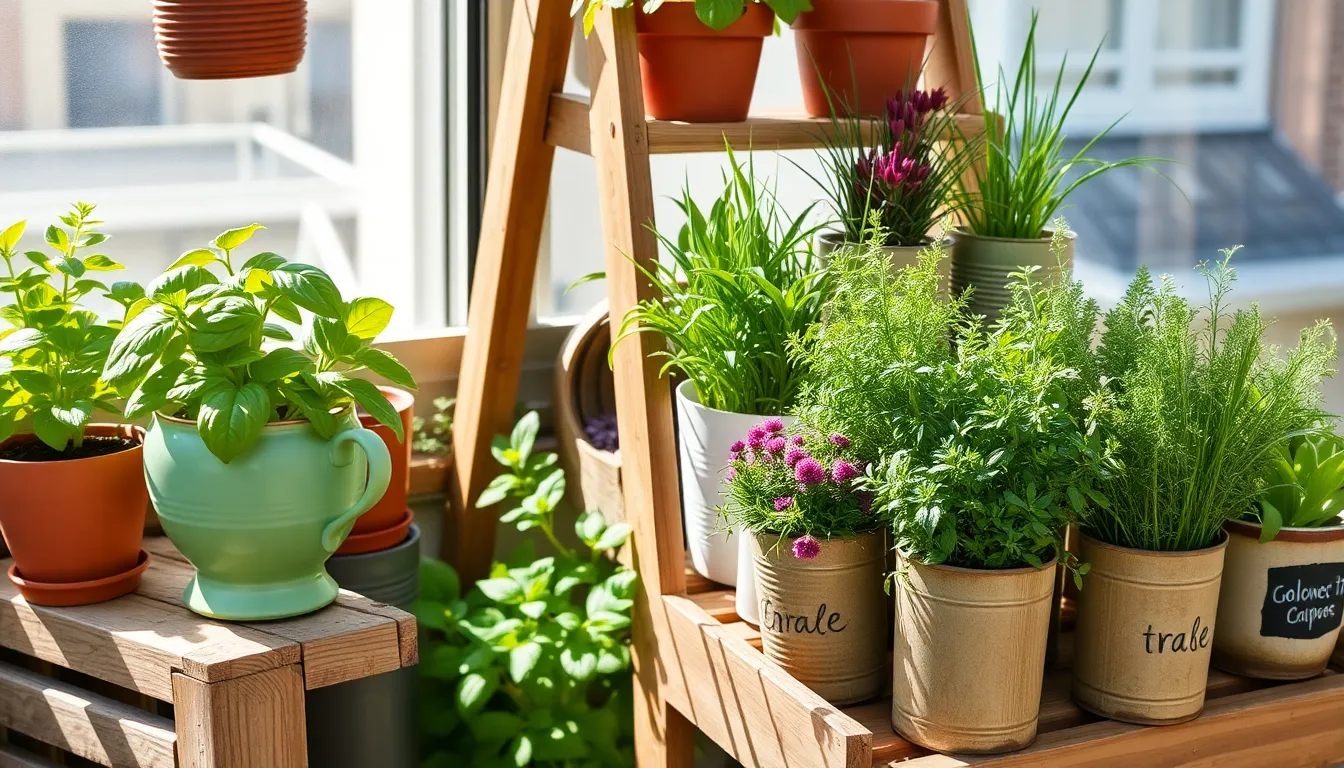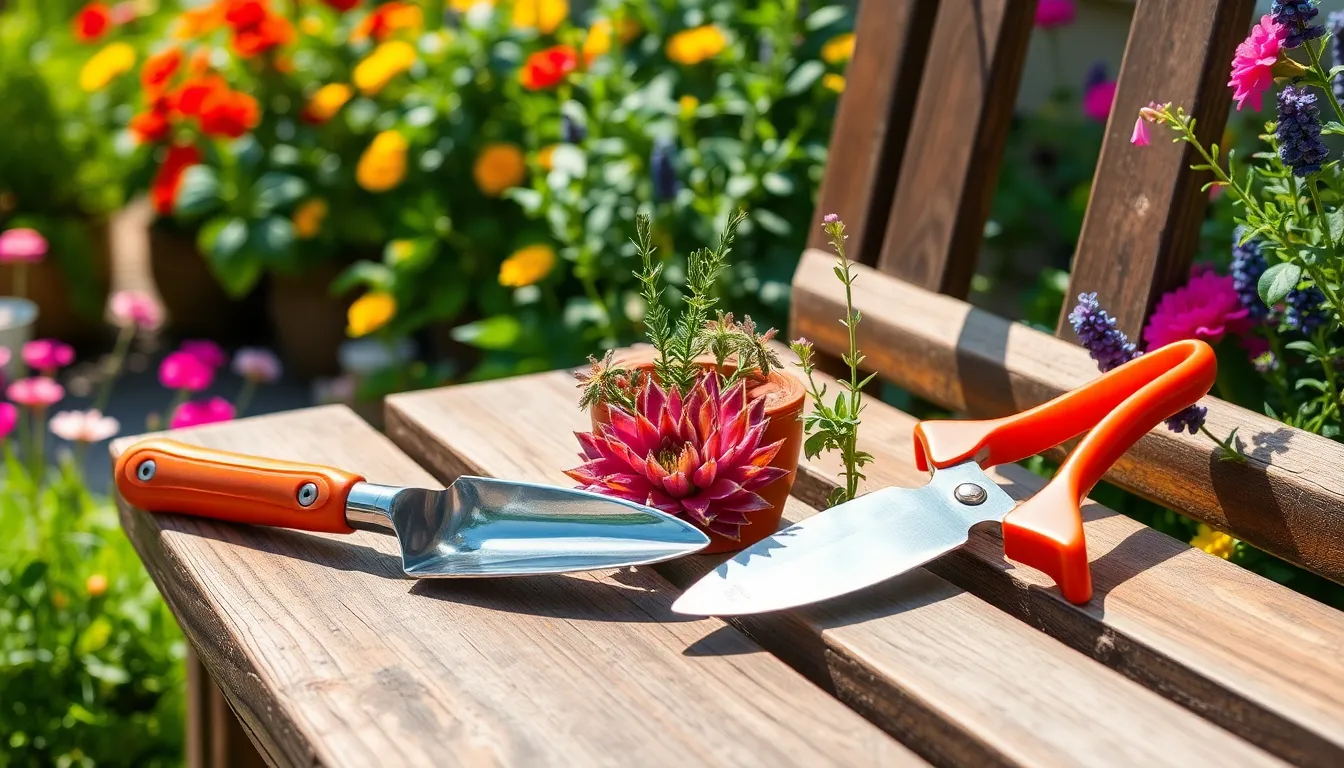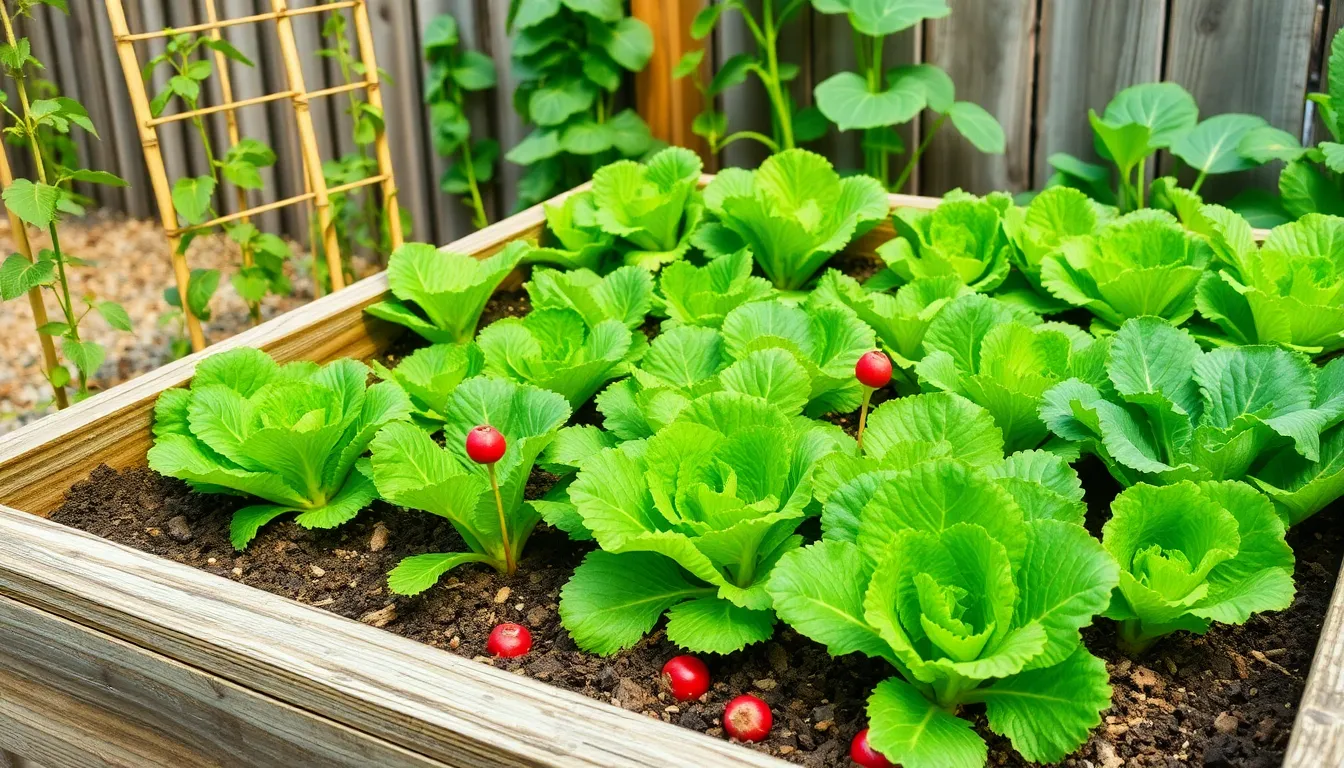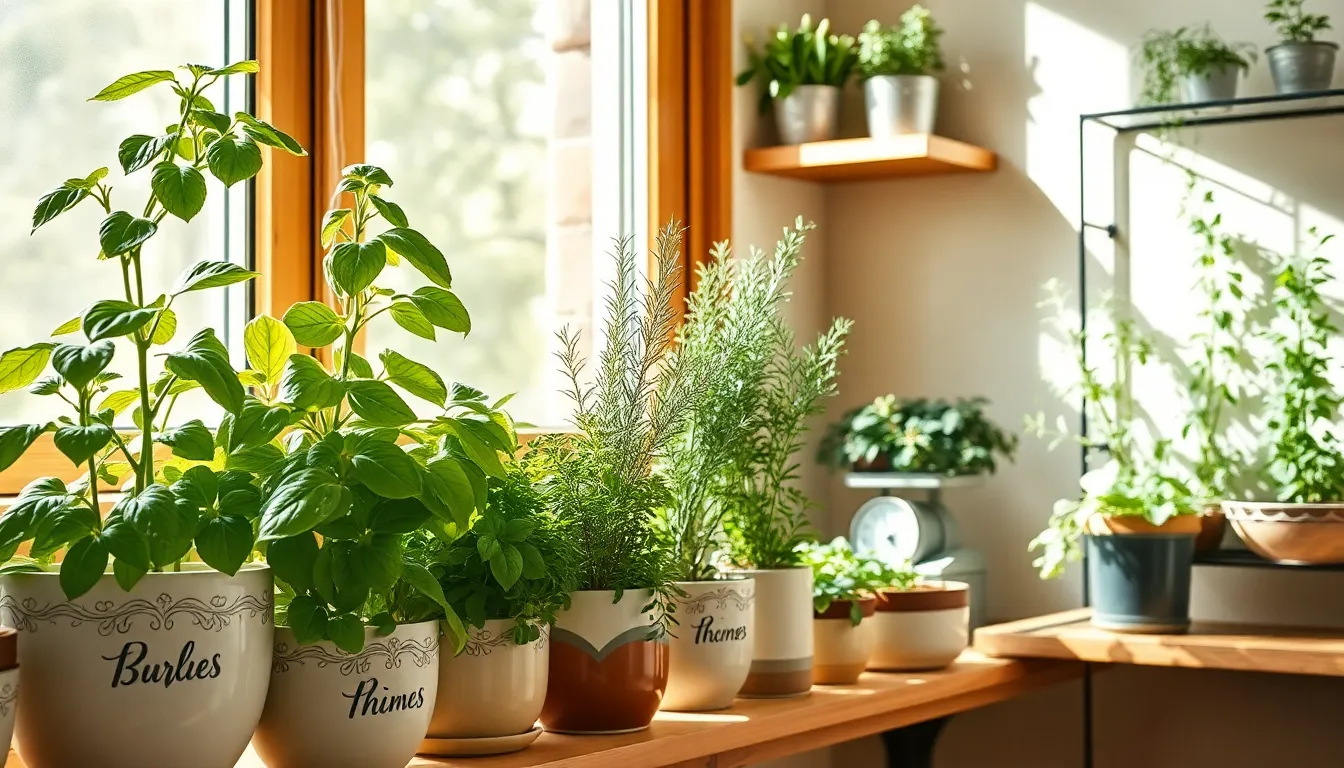Gardening has a magical way of transforming small spaces and tight budgets into lush, aromatic havens. Whether you’re just getting your hands dirty for the first time or you’re a seasoned green thumb, “10 Budget-Friendly Herb Garden Ideas” will unlock the door to a world of vibrant flavors and fresh aromas right at your fingertips. These garden ideas offer a delightful blend of creativity and affordability, making it possible for anyone to cultivate their own herbal oasis without breaking the bank.
Imagine the satisfaction of snipping fresh basil for your homemade pesto or mint for a refreshing iced tea, all from a garden you designed yourself. With these ideas, you’ll discover practical techniques and clever tips to maximize your space and resources, ensuring your garden thrives. By the end of this guide, you’ll feel empowered and inspired, ready to nurture your herb garden with confidence and reap the delicious rewards of your efforts.
Repurpose Containers for Planting
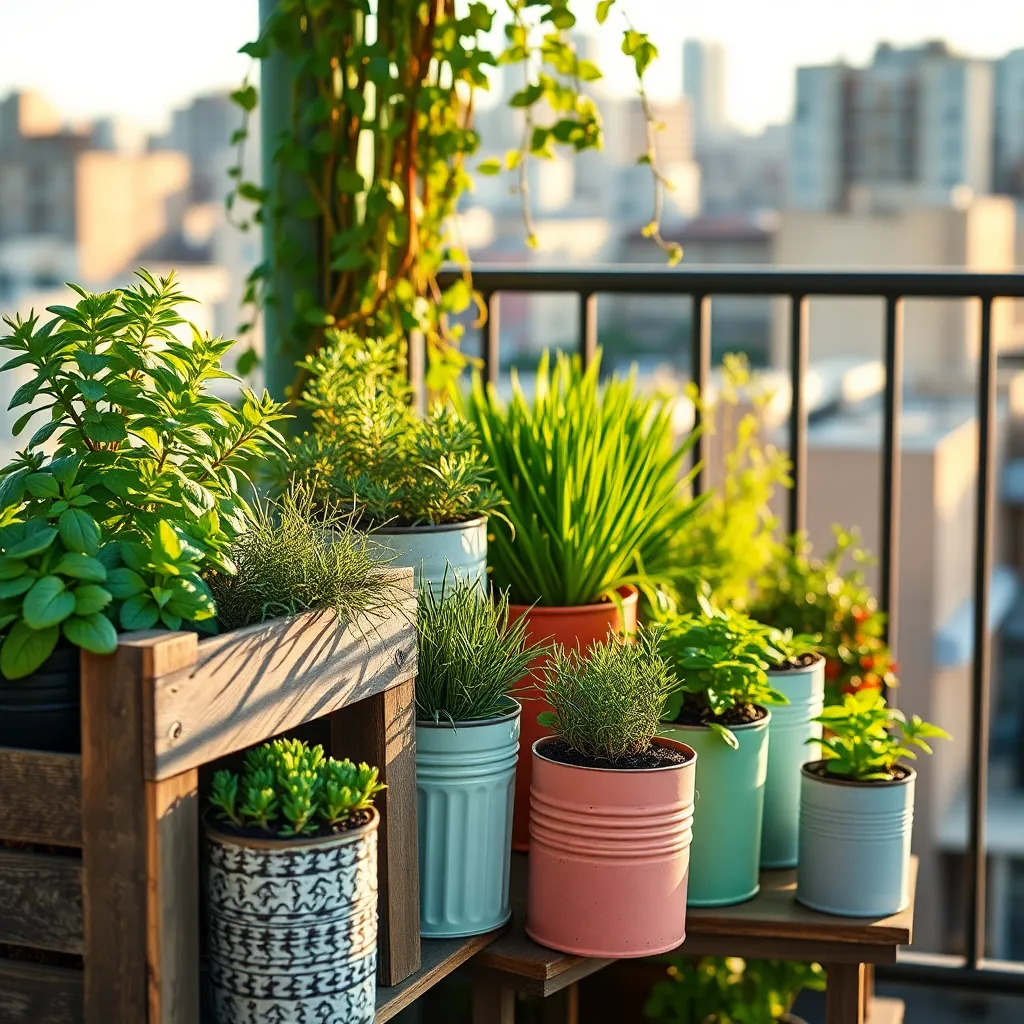
Consider using old kitchen pots, tin cans, or even teacups as charming plant containers for your herb garden. Ensure these repurposed containers have adequate drainage holes at the bottom to prevent waterlogging, which can be detrimental to herbs like basil and thyme.
Repurposing containers can be a fun and creative way to personalize your garden space. Before planting, thoroughly clean the containers to remove any residues that could harm your plants, and use a rich potting mix suitable for herbs.
Herbs such as mint and parsley thrive in containers and can be placed on sunny windowsills or patios. Remember to water them regularly, allowing the soil to dry slightly between waterings to mimic their natural growing conditions.
For a more advanced touch, consider painting or decorating your containers to enhance their aesthetic appeal. Additionally, grouping containers with similar sunlight and watering needs can make maintenance easier and help ensure your herbs flourish together.
Start with Seed Packets
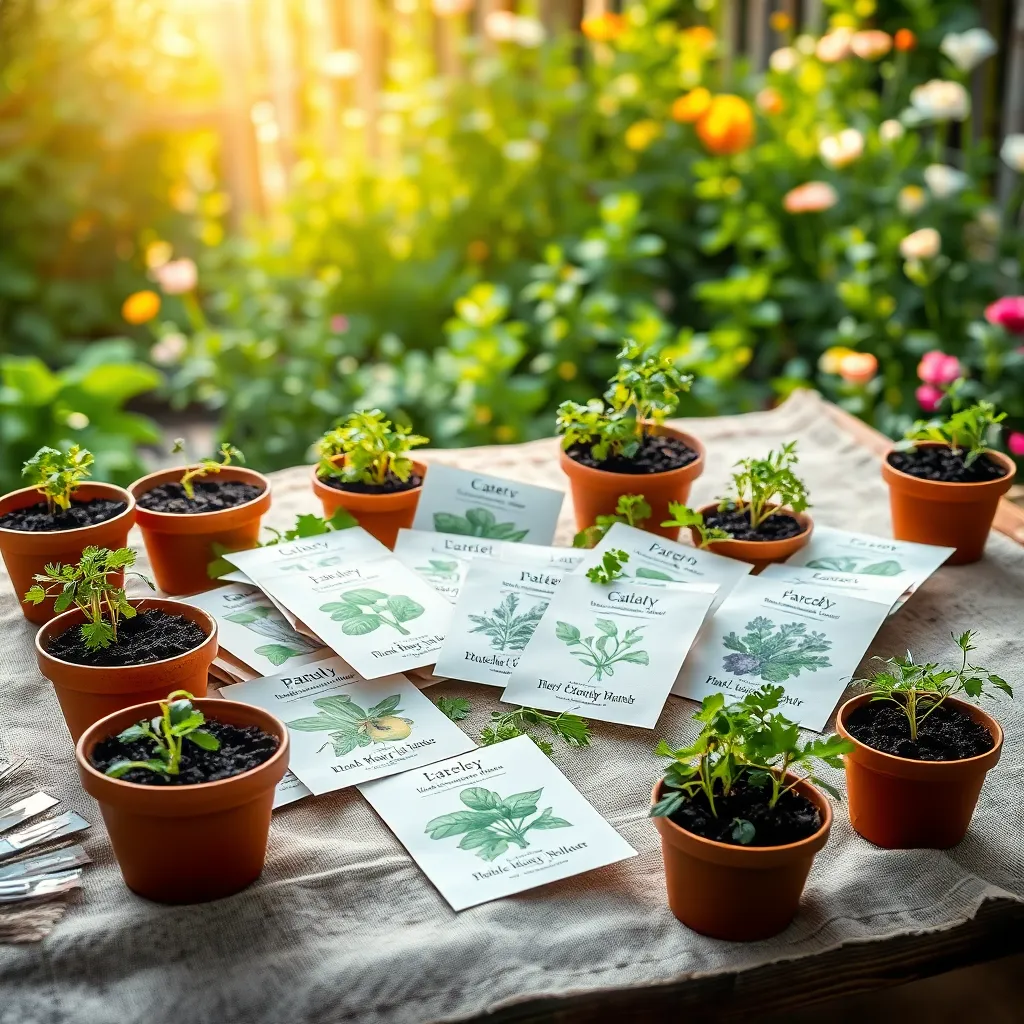
Starting an herb garden from seed packets is an affordable and rewarding option for gardeners. Many common herbs like basil, cilantro, and dill can be easily grown from seeds, which are typically cheaper than purchasing seedlings.
When selecting seeds, look for those that are well-suited to your climate and growing conditions. It’s crucial to check the packet for germination instructions and the ideal planting time to ensure successful growth.
A great advantage of starting with seeds is the ability to choose from a wide variety of herb types, including some that are not commonly available as transplants. This allows you to experiment with unique flavors and fragrances, adding diversity to your garden and kitchen.
To start your seeds, fill small pots or seed trays with a light, well-draining soil mix. Water the soil until it is evenly moist but not soggy, then plant the seeds according to the depth recommended on the packet.
As the seeds germinate, provide them with plenty of sunlight, either by placing them on a sunny windowsill or using grow lights if natural light is limited. Keep the soil consistently moist, but be careful to avoid overwatering, which can lead to root rot.
For experienced gardeners looking to optimize their herb growth, consider the benefits of using a seed starting heat mat to maintain a consistent soil temperature. This can significantly improve germination rates, especially for heat-loving herbs like basil and oregano.
Utilize Kitchen Scraps as Fertilizer
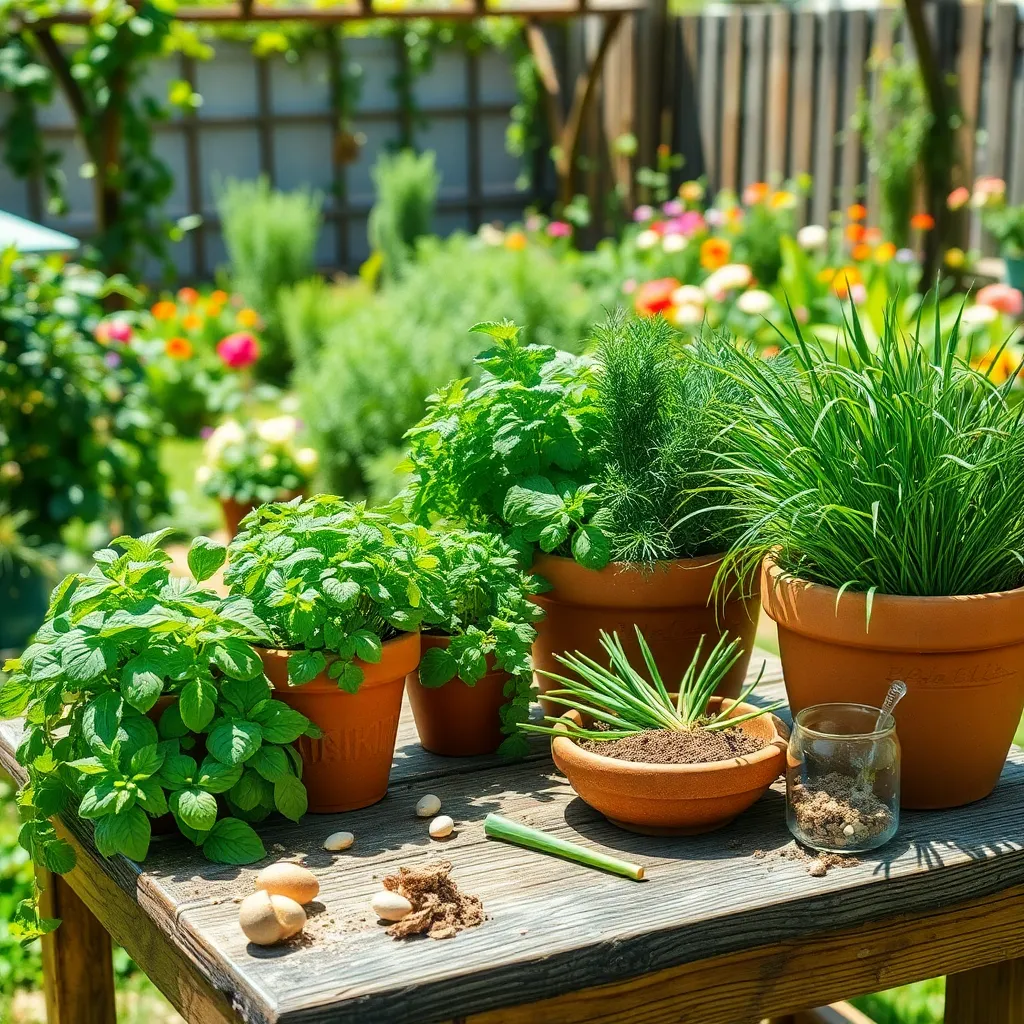
Transform your kitchen scraps into a valuable fertilizer for your herb garden by starting a simple compost pile. Collect vegetable peels, coffee grounds, and eggshells, which are rich in nutrients that your plants will love.
Rather than throwing away used coffee grounds, sprinkle them directly onto the soil around your herbs. Coffee grounds are high in nitrogen and can help improve soil structure, making them a fantastic addition to your gardening routine.
Eggshells are another excellent kitchen byproduct that can enhance your garden’s health. Crush them into small pieces and mix them into the soil to add calcium, which is essential for plant growth and preventing blossom-end rot.
Creating a compost tea from vegetable scraps can give your plants a nutrient boost. Simply place scraps in a bucket of water, let it steep for a few days, then strain and use the liquid to water your herbs.
For those looking to take their garden to the next level, consider vermicomposting with kitchen scraps using a worm bin. This method produces a nutrient-rich compost that is perfect for boosting the growth of your herbs, ensuring they thrive season after season.
Create DIY Vertical Gardens
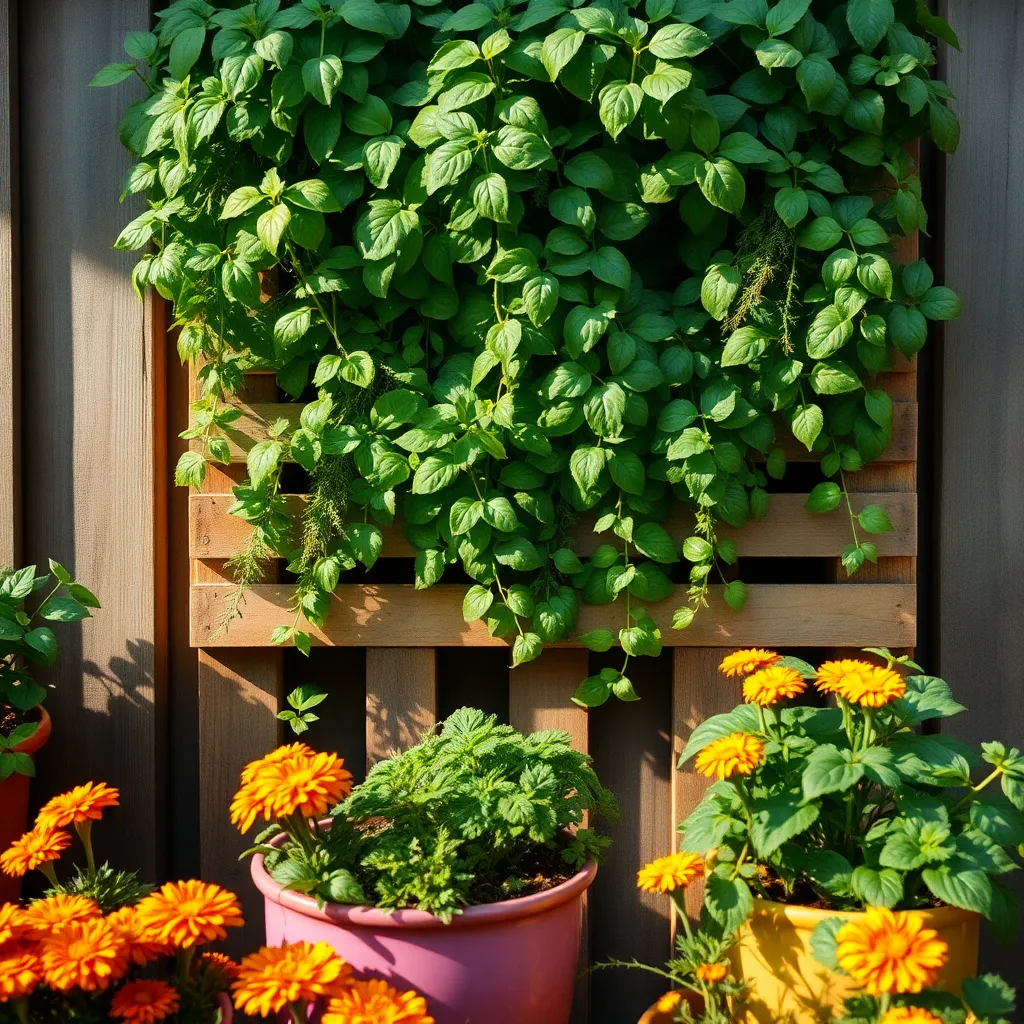
Vertical gardens are an excellent way to maximize space and grow herbs even in small areas. To get started, repurpose items like old wooden pallets or shoe organizers to serve as your vertical frame.
Fill each pocket or compartment with a well-draining soil mix, such as a combination of potting soil and perlite. This ensures that your herbs have the proper drainage they need to thrive and prevents root rot.
Choose herbs that adapt well to vertical growing conditions, such as thyme, oregano, and basil. These herbs not only grow compactly but also enjoy the good air circulation that vertical gardens provide.
Make sure your vertical garden receives adequate sunlight, ideally 6-8 hours of direct sunlight per day. If natural light is limited, consider using grow lights to supplement and ensure your herbs grow healthy and robust.
Harvest Herbs Regularly for Growth
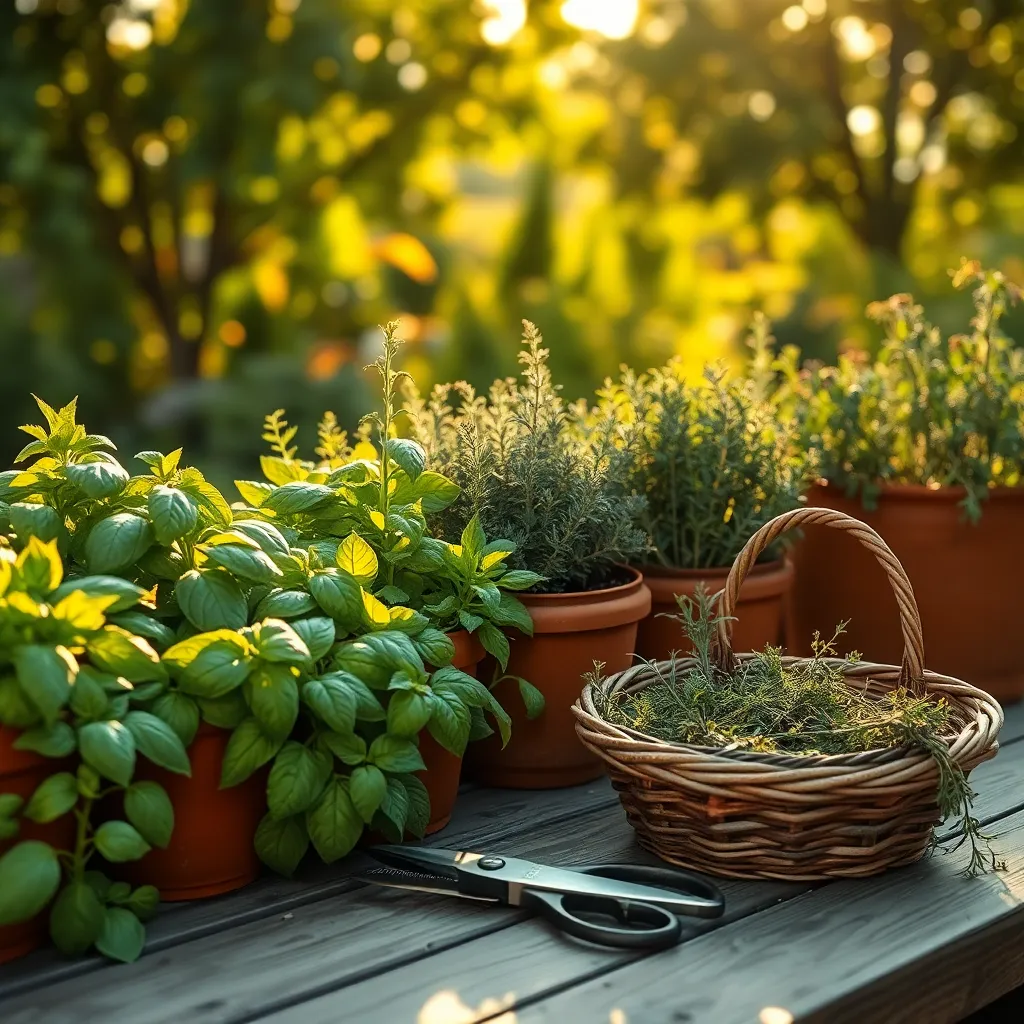
Regularly harvesting herbs encourages them to produce new growth, keeping your plants lush and productive. Begin by snipping off the top leaves and stems with clean, sharp scissors or pruners, which helps maintain the plant’s shape and health.
For beginners, a general rule is to never remove more than one-third of the plant at a time, ensuring it remains vigorous. Advanced gardeners may try succession harvesting, where you stagger the harvest of different sections of the plant to maximize yield.
Herbs like basil and mint thrive when picked frequently, as it prevents them from flowering and becoming woody. For optimal results, harvest in the morning after the dew has dried but before the sun is too strong, as this is when the essential oils are most concentrated.
Ensure your herbs are growing in well-drained soil, ideally enriched with organic matter like compost, to support continuous growth. Water your herbs thoroughly and regularly, especially during dry spells, but allow the soil to dry out slightly between watering to prevent root rot.
Use Companion Planting Techniques
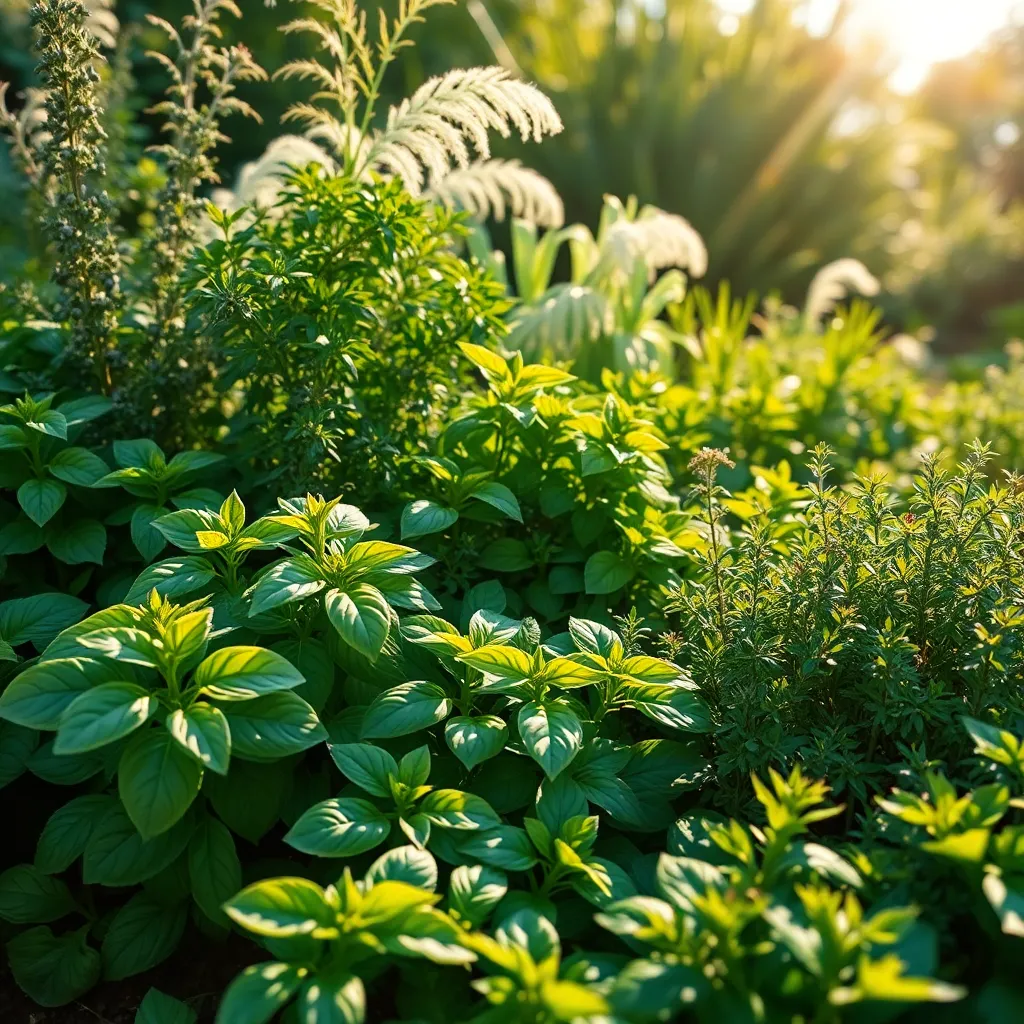
Companion planting is a smart way to optimize your herb garden, leading to healthier plants and more bountiful harvests. By pairing herbs with compatible neighbors, you can enhance growth, deter pests, and even improve flavor.
For example, planting basil near tomatoes is a classic combination that not only enhances the flavor of your tomatoes but also repels harmful insects. Basil thrives in well-drained soil and requires regular watering, but be careful not to overwater as it prefers to dry out slightly between waterings.
Incorporating marigolds in your herb garden is another effective strategy. These vibrant flowers can repel nematodes and other pests that might otherwise damage your herbs, making them a valuable ally in organic pest control.
For a more advanced approach, consider using the “three sisters” method, which involves planting corn, beans, and squash together to maximize space and nutrient sharing. While this technique is traditionally used for vegetables, you can adapt it for herbs by grouping taller herbs like dill with shorter ones such as parsley and creeping thyme.
Make Homemade Pest Repellents
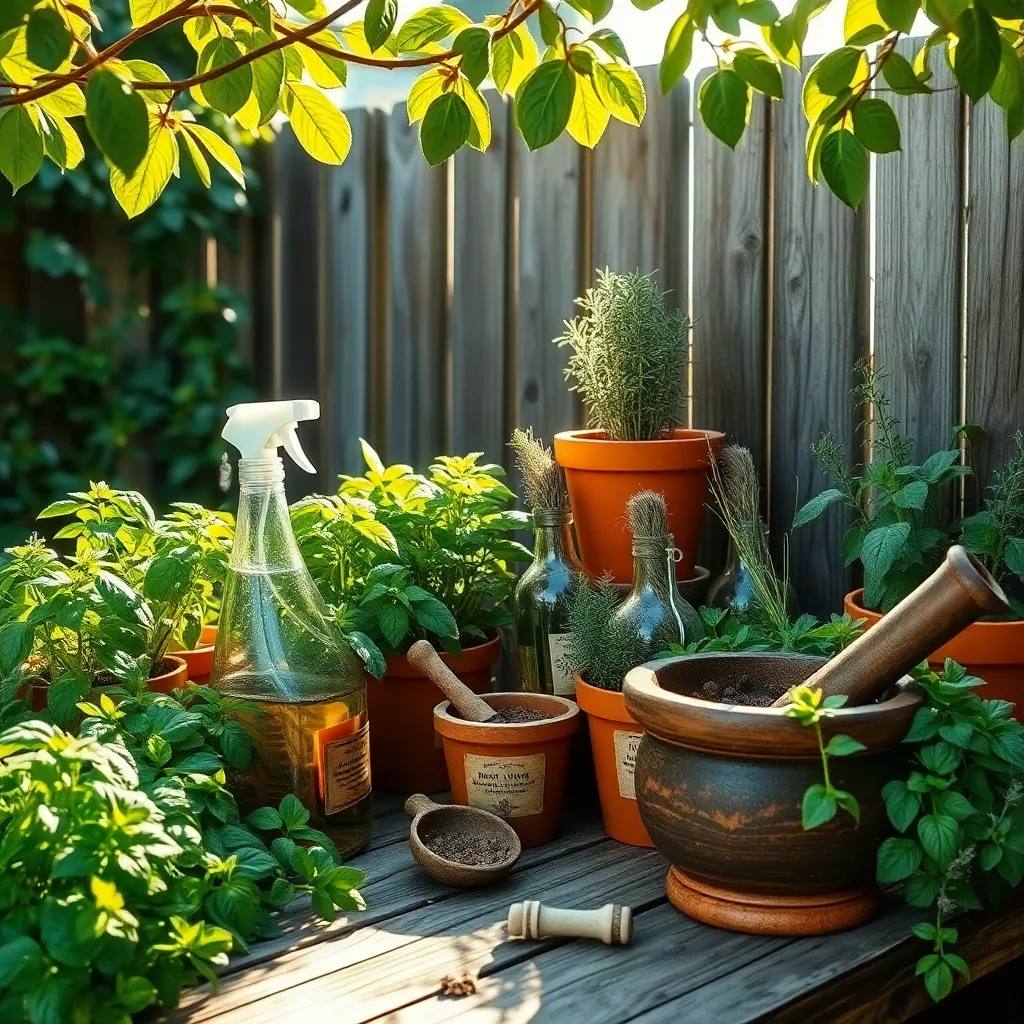
Creating homemade pest repellents is an effective way to maintain a healthy herb garden without breaking the bank. These natural solutions are not only cost-effective but also safe for the environment and your plants.
One simple recipe involves mixing water with a few drops of dish soap and a tablespoon of vegetable oil. This mixture can be sprayed directly onto the leaves of your herbs to deter pests like aphids and spider mites.
For a more potent solution, consider making a garlic spray. Blend a few cloves of garlic with water, strain the mixture, and spray it on your plants to repel a wide range of insects.
Essential oils can also be valuable allies in the fight against pests. Combine peppermint or rosemary oil with water and spray it around your garden to deter ants and other crawling insects.
It’s crucial to test any homemade repellent on a small area of your plants first to ensure it doesn’t cause damage. Applying these solutions in the early morning or late afternoon helps avoid any potential leaf burn from the sun.
Install a Simple Drip System
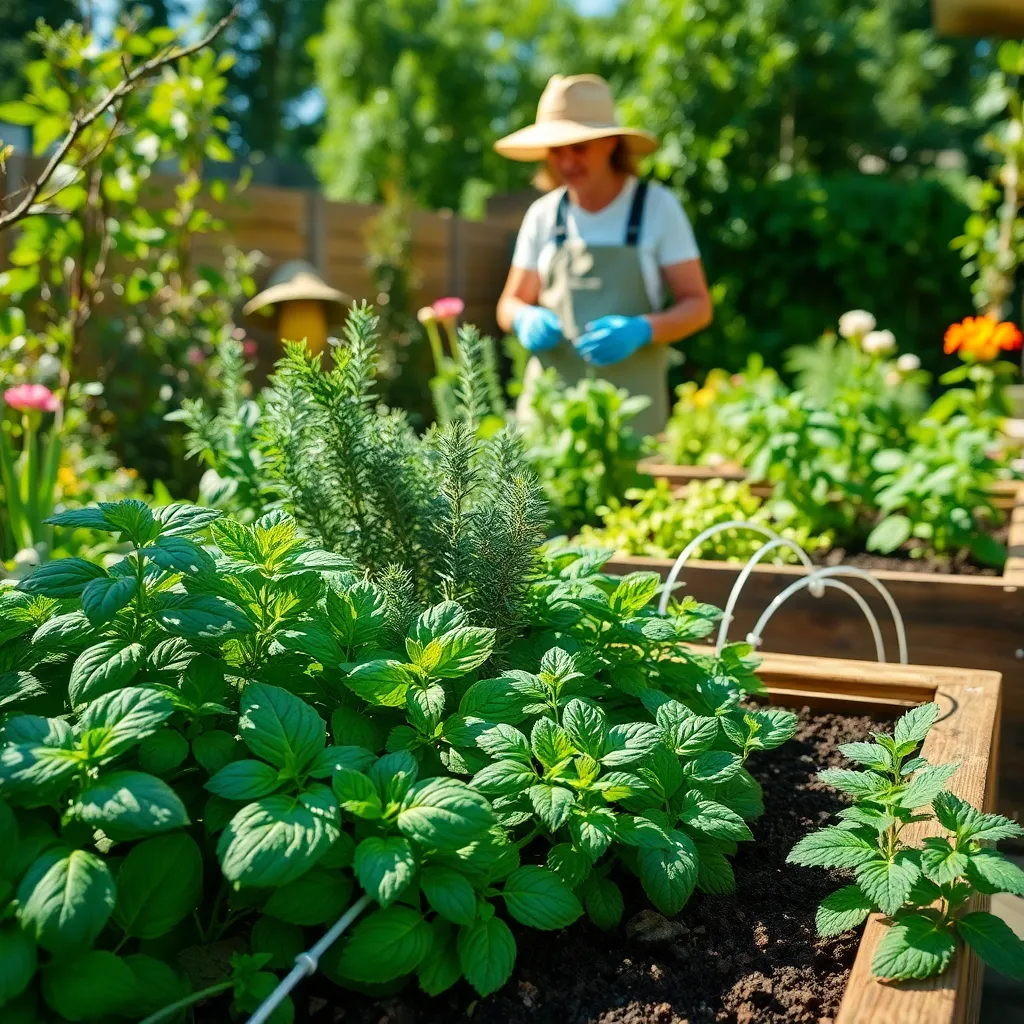
Installing a simple drip system in your herb garden can significantly reduce water waste while ensuring your plants receive consistent moisture. Drip systems are highly efficient and can be set up using basic materials like tubing, emitters, and a timer, which are available at most garden centers.
Start by measuring the area of your herb garden to determine the length of tubing required. Position the tubing carefully so that it runs close to the base of each plant, allowing water to seep directly into the soil where roots can absorb it effectively.
Cut the tubing to fit your garden layout, and use connectors to navigate around corners or obstacles. Install emitters spaced evenly along the tubing; for most herbs, one emitter per plant is sufficient, but larger plants may require additional emitters.
For best results, set the timer to water early in the morning, minimizing evaporation and fungal diseases. Adjust the watering schedule according to the season—reduce frequency during cooler months and increase during hot, dry spells to keep your herbs thriving.
Label Herbs with Painted Rocks
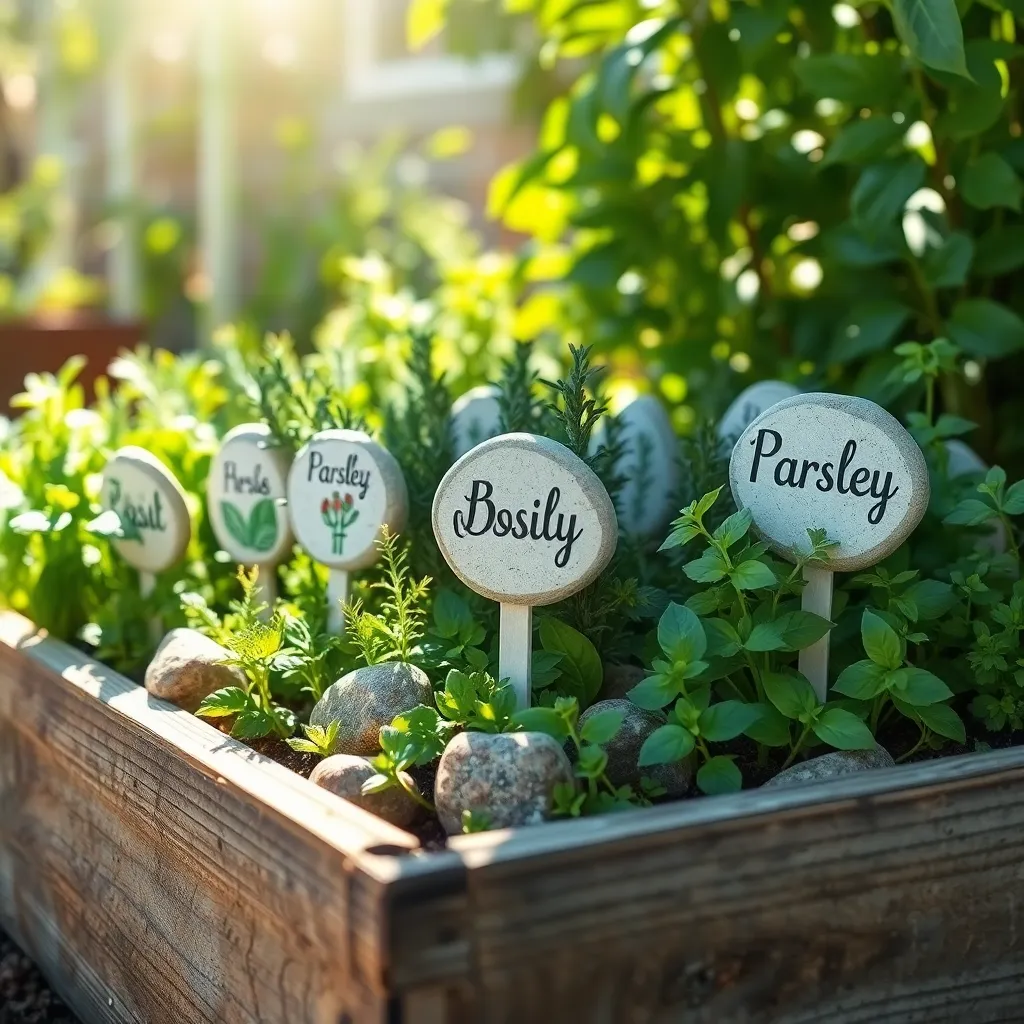
Adding a personal touch to your herb garden can be both fun and functional with painted rock labels. Start by collecting smooth, flat stones that are large enough to write on clearly, ensuring they’re visible among your herbs.
Once you have your stones, wash them thoroughly to remove any dirt or debris, which helps the paint adhere better. Use an outdoor-friendly acrylic paint to write the names of your herbs, and feel free to get creative with colors and designs.
Place the painted rocks at the base of each herb plant, ensuring they don’t block any critical sunlight. This method not only helps in identifying your herbs, especially for beginners, but also adds a decorative element to your garden space.
For those with more experience, consider using a clear outdoor sealant over your painted designs to protect them from weathering. This step can significantly extend the life of your labels, keeping your garden looking neat and organized year-round.
Rotate Herbs Seasonally
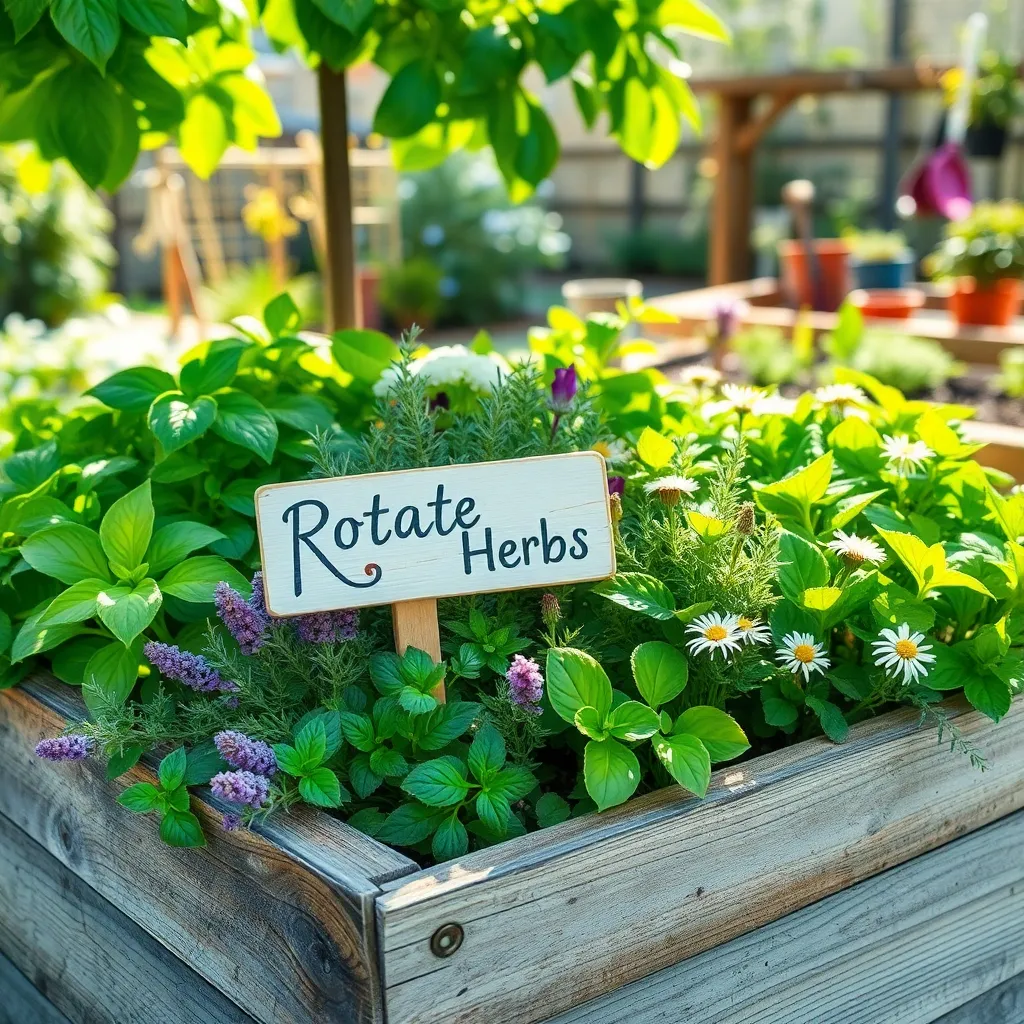
Rotating your herbs seasonally is a smart way to ensure you always have fresh flavors at your fingertips. Start by understanding which herbs thrive in different seasons and plan accordingly to maximize your harvest.
In the spring, focus on planting hardy herbs like parsley and cilantro, which thrive in cooler temperatures. These herbs prefer well-drained soil and regular watering, so keep the soil consistently moist but not waterlogged.
As summer approaches, shift your attention to heat-loving herbs such as basil and oregano. These herbs flourish in full sun and require a bit more watering; aim to water them early in the morning to prevent evaporation.
Come fall, consider sowing seeds for herbs like chives and sage that can handle the cooler, shorter days. These plants benefit from a slightly sandy soil mix to ensure proper drainage and can often tolerate a light frost.
For winter, hardy perennial herbs like rosemary and thyme can be grown indoors with the right conditions. Ensure they receive enough light by placing them on a sunny windowsill and water sparingly, as overwatering can lead to root rot.
By rotating herbs seasonally, you’ll not only enjoy a continuous supply of fresh flavors but also maintain the health of your garden. This practice also helps prevent pest build-up and soil depletion, making it a sustainable choice for any gardener.
Conclusion: Growing Success with These Plants
As we’ve explored in ’10 Budget-Friendly Herb Garden Ideas’, nurturing a garden is a lot like nurturing a relationship. We discovered the importance of starting small with container gardens, just as relationships flourish with simple acts of love. We learned the value of repurposing household items, paralleling how relationships thrive on creativity and resourcefulness. Embracing community through shared gardens reminds us of the importance of support networks. The beauty of perennial herbs teaches us to invest in long-lasting bonds, while vertical gardens illustrate how relationships can grow upward with the right support. Companion planting highlights the importance of compatibility, while windowsill gardens show how small spaces can harbor great love. Finally, DIY herb markers and homemade compost mirror how unique and personal touches strengthen connections.
To take action today, choose one idea and implement it as a relationship-building activity with your partner, friend, or family member. Make it a fun, shared project that fosters connection. Save this article to revisit these insights, ensuring your relationship garden continues to flourish.
Remember, nurturing relationships is a continuous journey, just like tending to a garden. With consistent care and love, your relationships can bloom into something truly extraordinary. 🌿❤️

